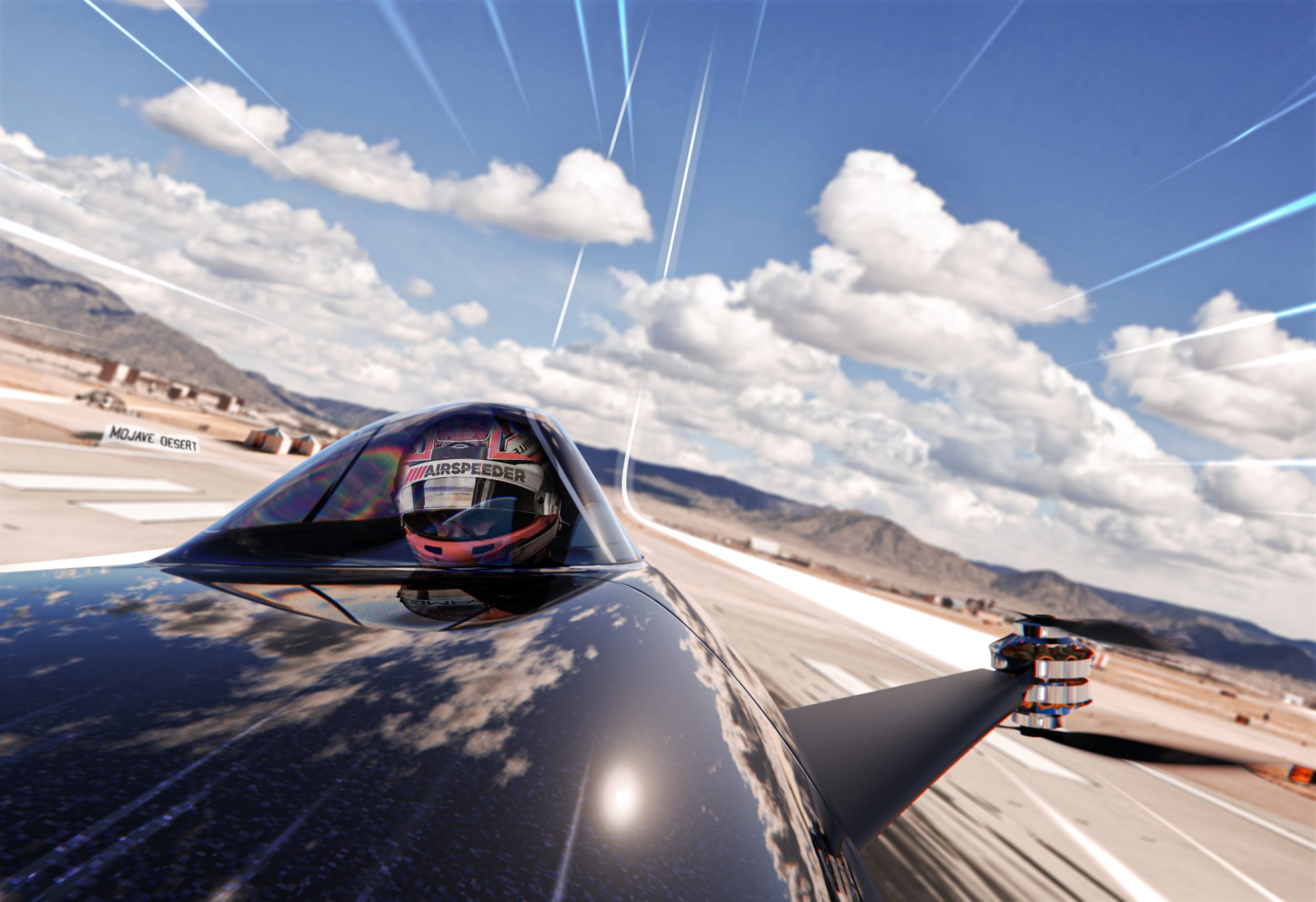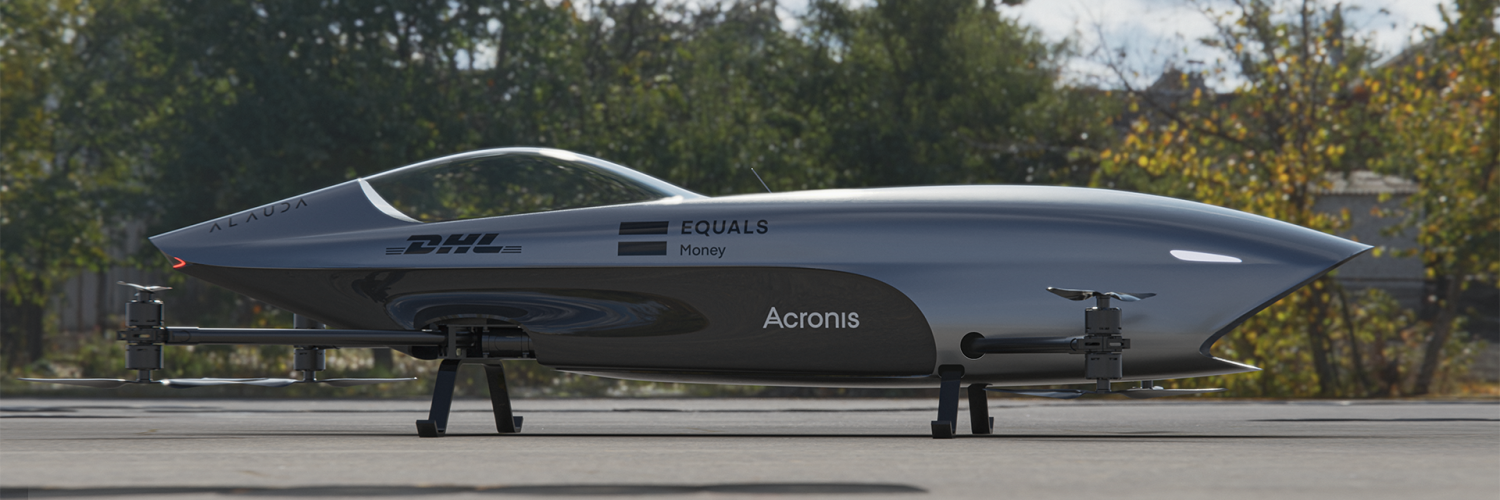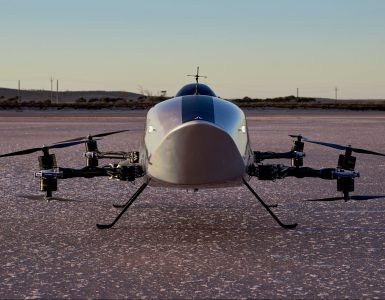The Airspeeder Mk3, a full-sized remotely operated electric vertical take off and landing vehicle (cVTOL), has been unveiled ahead of the world’s first flying car series.
The series, partnered by Acronis, is the first of its kind and will showcase groundbreaking technology that will pave the way for a manned series planned for 2022.
The Airspeeder Mk3 is an impressive piece of machinery indeed, capable of achieving 120 kph and utilising LiDAR, RADAR and machine vision.
“The unveiling of the world’s first full-sized electric flying racing car is a landmark moment in the dawn of a new mobility revolution,” commented Matthew Pearson, Founder, Airspeeder and Alauda Aeronautics. “It is competition that drives progress and our racing series is hastening the arrival of technology that will transform clean-air passenger transport, logistics and even advanced air mobility for medical applications.
“The world’s first electric flying car races will take place this year and will be the most exciting and progressive motorsport on the planet.”
Currently being manufactured at Airspeeder and Alauda’s technical HQ in Adelaide, South Australia, the aircraft is being developed and manufactured by a team drawn from leading names in aerospace, automotive and motorsport technology including; Mclaren, Babcock Aviation, Boeing, Jaguar Land Rover, Rolls-Royce and Brabham.
“Britain is a globally recognised centre of excellence in motorsports and aerospace,” added Pearson. “In creating a racing series that will accelerate a mobility revolution we will need to draw upon these skills. We are building an engineering base in Britain, the existing home of our Commercial HQ. This will lead to the creation of highly skilled jobs and strategically important proximity to the rapidly growing eVTOL industry, a market predicted to be worth $1.5trillion by 2050.”
Final behind-closed-doors pre-season tests will happen in Australia before the start of an international racing calendar and the initial Mk3 races will provide vital information on vehicle dynamics, performance, safety and powertrain technology that will inform the final development of the manned Mk4 Airspeeder vehicle.

AIRSPEEDER MK3 | TECHNICAL DETAILS:
The Airspeeder Mk3 represents a giant technical leap forward in the development of the world’s first racing series for electric flying cars.
This remotely-piloted vehicle is the final iteration of an electric flying racing car before the introduction of manned racing craft, the Airspeeder Mk4, due to debut in 2022.
SAFETY SYSTEMS:
The craft, which will be operated by an expert remote operator from the ground, features a suite of technologies and engineering elements never before seen on an eVTOL craft. These innovations will be validated in this key unmanned proving phase and include LiDAR and Radar collision avoidance systems that create a ‘virtual forcefield’ around the craft to ensure close but ultimately safe racing. The Mk3 features a carbon fibre frame and fuselage chosen for its strength, stiffness and lightweight properties, which ensures maneuverability, performance and efficiency. The carbon fibre frame and fuselage adds a vital mechanical layer of safety, which will be further enhanced by a full carbon fibre monocoque body to be introduced on the Mk4 vehicle.
POWERTRAIN:
The MK3 powertrain represents a significant upgrade on the Mk2 proof of concept vehicle, with power increased by 95% with only a 50% increase in weight. A 96 kW electric powertrain already sees the Mk3 operating with a thrust to weight ratio above two, on a craft that weighs just 100KG unmanned. The Mk3 speeders will fly at speeds in excess of 120 km\h.
MANEUVERABILITY AND STABILITY:
The Mk3 speeders are laid-out in an ‘octocopter X formation’. This provides significant advantages to pilots in terms of maneuverability and stability. When racing the pilot will be able to make the same sharp hairpin style turns as a Formula 1 car but with the added third dimension of being able to move vertically. The octocopter configuration also adds an important measure of vehicle redundancy and will ensure the craft can safely land and remain in control should a rotor or battery system fail.
RAPID PIT STOPS:
Airspeeder GPs will include rapid pit stops. To facilitate this, Alauda’s engineers have developed an innovative ‘slide and lock’ system for the rapid removal and replacement of batteries when on the ground, this technology debuts on the Mk3. A strategic layer is added to the sport with this approach as teams will be able to adapt battery strategy depending on the dynamic requirements of that particular section of the race. For example, for courses requiring more maneuverability but less straight line speed, a lighter battery pack can be easily selected to deliver more maneuverability at the cost of raw power or endurance.
For more on Airspeeder, visit their official website, airspeeder.com.





